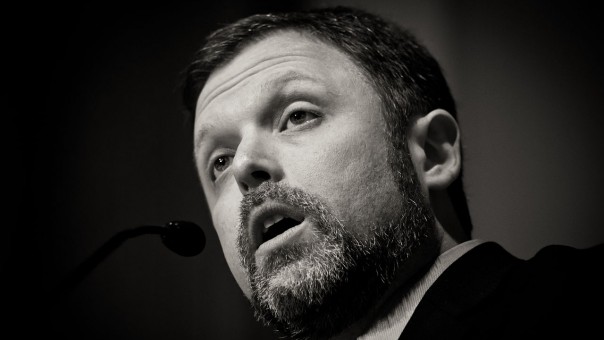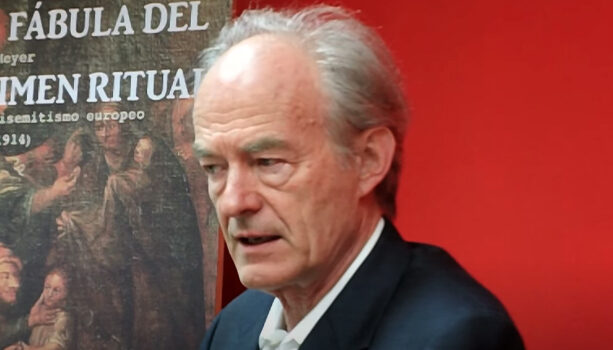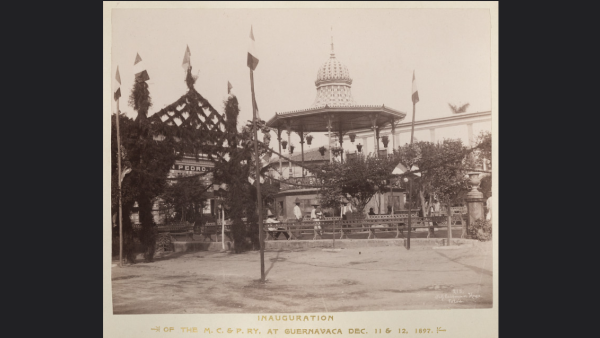Under the Affluence Shaming the Poor, Praising the Rich
Tim Wise
When Charles Dickens began A Tale of Two Cities with the famous line, “It was the best of times, it was the worst of times,” he was referring to conditions in eighteenth-century London and Paris, prior to the French Revolution: a time during which the splendor of great wealth and power rested uncomfortably aside the rising discontent of the masses. Pointing out the grotesque economic, social, and moral contradictions of feudal Europe was Dickens’s purpose, accomplished by the author in a style and to an extent rarely matched before or since. And yet, although it was a very different time and a very different place than that in which (and from which) I write these words today, much of modern life in the United States calls to mind this opening literary salvo; for here too we can see a tale of two cities, or rather, two nations, increasingly in conflict.
On the one hand, millionaires and even billionaires are being minted at a dizzying pace. McMansions, high-end real estate developments, and gated communities are popping up all over the country, barely slowed for even a moment by the economic crisis that struck in the first few months of 2008. The high-end luxury market for everything from cars to private planes to vacation packages to fashion is steaming ahead full bore, with those able to access said markets earning more than ever, able to create for themselves a secure, private, and cloistered world. This is an America that regularly pampers its pets at luxurious day spas, adds to its already-impressive wine cellars with bottles that will never be drunk but are merely to be possessed, and takes regular weekend trips to places most Americans will never see except by way of a Google search.1 This is an America willing and able to pay $1 million for a guaranteed parking spot in New York’s SoHo,2 or $9,000 a year to have their own private Facebook rip-off called Netropolitan,3 which allows them to avoid having their feed cluttered with pictures of middle class people’s cats. This is an America where the thirteen-year old children of the elite help their parents pick out multi-million dollar condos for the family,4 and where 22-year olds to whom the New York Times refers as “creative souls” wince at the prospects of finding decent places to live in the city for a mere $3,700 per month.5 It’s an America that throws $50,000 birthday parties for its children because you’re only seven once, and it’s an America whose richest college students hire “concierge” services to help them do everything: “decorate apartments, get academic tutoring, snag coveted restaurant reservations and handle a litany of other bothersome chores,” not to mention assisting them when it comes to getting bidets installed in their fancy bathrooms.6
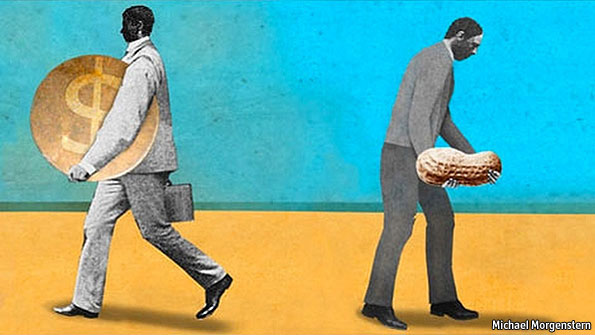
On the other hand, and in stark contrast to this America of ostentatious wealth, there is another, very different, country. Although housed within the borders of the nation itself, it looks nothing like the one previously mentioned; it exists almost as a parallel universe, in which the inhabitants technically share the same galaxy as their better-off cousins and yet experience life entirely differently. It is a world in which millions of households continue to struggle, irrespective of the loudly trumpeted assurances from financial elites that economic recovery is upon us. It’s a world in which families continue to face the loss of their homes to foreclosure, and where a serious health emergency can still bankrupt families; where the cost of higher education remains prohibitive for millions; where hundreds of thousands each night face homelessness and food insecurity; where the food pantries and shelters meant to care for such persons as these are short on supplies and space,7 and where long- term unemployment—jobless spells lasting twenty-six, fifty-two, even ninety weeks or more—are increasingly common. Millions who lost their jobs during the Great Recession are only now beginning to crawl out of the financial hole into which their families fell; and for many, if they have found new work, it is for lower pay, fewer benefits, and less real security than they enjoyed in their previous positions.
These two Americas pass each other occasionally on the street, in the line at a fast-food restaurant or coffee shop, at the grocery, at a sporting event or in the park on a sunny day. Members of each America may listen to much of the same music, go to the same movies, and watch many of the same television shows; and yet, their occasional proximity to one another does little to bridge the experiential gap between them. They may be watching the same game, so to speak, but some are watching it from increasingly remote skyboxes while others are nestled down in the worst possible general admission seats, and still others are having to watch from home on a barely functioning television set. It is not merely that two Americas exist, but that they are pulling farther and farther apart. In some particularly disturbing cases, these two Americas live right next door to one another, in apartment buildings in New York, for instance—but those with lower incomes are being asked to use separate entrances to the same buildings,8 prevented from using various building amenities,9 or have their balcony space limited by a wire fence, behind which they must remain, unlike their more affluent neighbors.10 In places like San Francisco, where the tech boom has produced staggering amounts of new wealth, tens of thousands of others are struggling to survive in a city where the gap between rich and poor is now actually higher than in Rwanda and only slightly less extreme than it is in Guatemala.11
That said, this work is not about those disparities per se. Plenty of writers have tackled that subject, documenting in painstaking detail the ways that inequality is deepening. Although I too will recite some of the woeful evidence of this increasing economic divide, my task here is less to describe the existence of two Americas as to provide some analytical framework for understanding how we got here and why it matters. For our problem is not merely a material one: it is not simply that we are becoming more unjust in terms of income and wealth distribution; we are also becoming a place where the way we speak about matters of inequality and economic injustice is increasingly disturbing. As the title of this work suggests, we are a nation increasingly “under the affluence,” meaning not only the power of those with excess wealth, but also subordinated to a mentality and ideology of affluence, the effect of which is to rationalize and normalize inequities, no matter how vast and how deep. The end result of all this has been to deepen a culture of cruelty, in which the conditions of the impoverished, the underemployed, and struggling are justified as the inevitable result of inadequate effort on their part, or cultural flaws, while the wealth and success of the elite are likewise rationalized as owing to their superior talent or value systems.
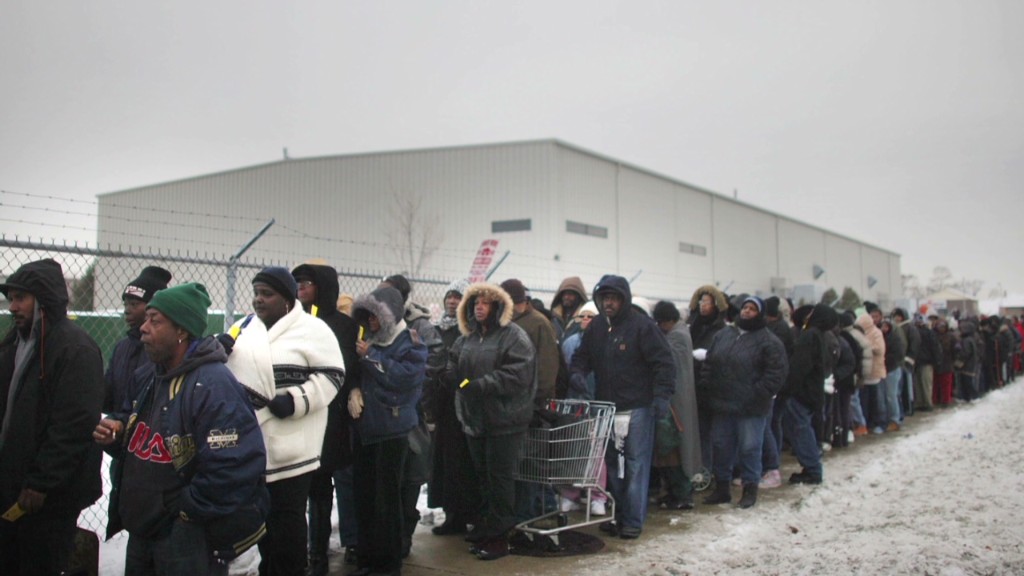
With all due respect to those who have raised the issue of inequality in the past several years, including activists in the Occupy movement, the broader trends in terms of how we talk about economic disparity are not promising. Increasingly, the right-wing media, politicians and those following their lead demonize the poor, the unemployed, those lacking health care, or those in need of public assistance. The have-nots and have-lessers are dehumanized while the elite are venerated. The political narrative of the “makers and the takers”—those who create wealth and those who are pre- sumably dependent on others—has become not merely a passing political meme, as with the 2012 presidential election; no indeed, it has become an almost routine ideological construct, parroted by talk-show hosts and talking heads, and believed by millions who follow their every word. Although Republican candidates gearing up for the 2016 presidential election seem (thus far) to be avoiding the polarizing rhetoric that caused such problems for Mitt Romney in the last race, with the larger conservative narrative largely tethered to the notion that the rich create value and the poor live off the rest of us, it is unlikely to remain in abeyance for long.
The purpose of this volume is to document the increasingly vituperative narrative of cruelty as regards those at the bottom of the nation’s class structure, and to understand why the United States, virtually alone among modern democracies, seems so hostile towards the poor and those in need. What separates us in this regard from the nations with which we like to compare ourselves, most all of which have far more generous programs of social uplift, from guaranteed national health care to paid maternity (and even paternity) leave to more extensive unemployment insurance? And why has the national mood about such government efforts on behalf of those in need turned increasingly sour in recent decades?
After all, it wasn’t always like this: there was a period from roughly the 1930s until the early 1970s during which time large numbers of Americans embraced a more robust and pro-active role for government in fighting inequality and ensuring opportunity. Aware of the cruelties of the Gilded Age and the era of the corporate Robber Barons, Americans had become increasingly skeptical of great fortunes and those who possessed them. The idea that the state had a role to play in the fulfillment of the so-called American Dream was one that was largely accepted by the nation’s people. Although the commitment to this ideal was highly selective—so, as we’ll discuss, the programs of the New Deal that were instrumental in creating the white middle class were made largely off-limits to persons of color—there was still a general consensus in the land that the nation had an obligation to help those who were unemployed, poor or hungry (at least so long as they were white). Today, even that race-bound consensus has largely been obliterated. So when and why did the public mood in this regard shift, and what does that tell us about the challenges that lie ahead? It is this question that drives much of the discussion in this work. That, and then the obvious follow-up: How do we move from a growing culture of cruelty to a culture of compassion where we not only perceive and relate to our fellow Americans with a sense of solidarity, but in which public policy reflects community, mutual kindness and concern, and where the idea of the common good is revived so as to replace the alienating, disconnected individualism that threatens to destroy us?
***
Under the Affluence Shaming the Poor, Praising the Rich, and Sacrificing the Future of America is an excerpt of the book with the same title. Forthcoming from City Light Books.
 Tim Wise is an American anti-racism activist and writer. Since 1995, he has given speeches at over 600 college campuses across the U.S
Tim Wise is an American anti-racism activist and writer. Since 1995, he has given speeches at over 600 college campuses across the U.S
NOTES
1 Please know, I am fully aware of the problematic nature of using the term “America” when referring to the United States. I am cognizant of the argument, made especially by many of my Latino and Latina brothers and sisters, to the effect that doing so amounts to appropriating to one nation the principal name of an entire continent, encompassing many nations. The Americas are more than us, in other words, and it is understandable that using the term for the U.S. alone could strike some as an act of linguistic colonialism. That said, I use the term America often throughout this book when discussing the United States, for the following reasons. First, however much I agree with the critique of its use, the term “America” as a signifier is recognizable to most readers, and as a writer, connecting to where the reader is at the moment is important. Second, to substitute “United States” for “America” each time the latter is used—as opposed to alternating between them—would become incredibly unwieldy for the reader. It might mean using “United States” twice in the same sentence clause, for instance. However ideologically preferable such a move might be, junking up a narrative with repetitive formal nouns of any kind so as to make a larger philosophical point (which will likely be lost on most readers anyway) is a conceit I won’t indulge simply to remain ideologically pure in the eyes of some. So too, using “USAmericans” when referring to people in the United States (though I’ve used it in previous essays) can be ridiculously confusing, and “United Statesians,” which I’ve heard in some circles is even more absurd. Fact is, persons in other nations within the Americas have never called themselves “Americans,” so it’s not as if we in the U.S. have stolen the term from others who were using it. As such, referring to persons in the United States as Americans is accurate (however non-exclusively accurate it might be) and entirely appropriate, or so it seems to me.
2 Michelle Higgins, “Buy Condo, Then Add Parking Spot for $1 Million,” http://www.nytimes.com/2014/09/10/realestate/million-dollar-parking-spot.html?- hp&action=click&pgtype=Homepage&version=HpSum&module=second-column- region®ion=top-news&WT.nav=top-news&_r=0 New York Times (September 9,2014).
3 Chloe Albanesius, “New ‘Facebook for Rich People’ Costs Just $9,000 to Join,” http://www.pcmag.com/article2/0,2817,2468652,00.asp PC Magazine (September 16, 2014).
4 Ben Yakas, “Brunch Hate Reads: NYC Kids Choose Multi-Million Dollar Apartments For Their Parents,” http://gothamist.com/2015/03/20/ny_times_defi- nitely_wants_to_spark_class_warfare.php, Gothamist (March 20, 2015).
5 Ben Yakas, “The Struggle Is Real: 22-Yr-Old Settles For $3700/Month Apartment,” http://gothamist.com/2014/10/19/the_struggle_is_real_22-yr-old_ sett.php, Gothamist (October 19, 2014).
6 Melissa Korn, “Forget the Old College Try, Ring the Concierge,” http://online.wsj.com/news/articles/SB1000142412788732345220457829018320244732
0?mod=WSJ_article_comments&mg=reno64-wsj&url=http%3A%2F%2Fonline. wsj.com%2Farticle%2FSB10001424127887323452204578290183202447320. html%3Fmod%3DWSJ_article_comments The Wall Street Journal (March 5, 2013).
7 Bryce Covert, “New York City Pantries Ran Out Of Food After Food Stamps Were Cut,” http://thinkprogress.org/economy/2014/01/23/3195501/ york-city-food-pantries-food-stamps/ Think Progress (January 23, 2014).
8 Kate Briquelet, “City OKs UWS development with ‘poor door’ for resi- dents,” http://nypost.com/2014/07/20/city-oks-uws-development-with-poor- door-for-residents/ New York Post (July 20, 2014).
9 Ronda Kaysen, “What’s Next, a Bouncer?” http://www.nytimes. com/2014/05/18/realestate/rent-regulated-tenants-excluded-from-amenities. html?_r=0 New York Times (May 16, 2014).
10 Kate Briquelet, “Luxury building fences off low-rent tenants’ terraces,” http://nypost.com/2014/12/07/luxury-bulding-fences-off-rent-stabilized-tenants- terraces/ New York Post (December 10, 2014).
11 Heather Knight, “Income inequality on par with developing nations,” http://www.sfgate.com/bayarea/article/Income-inequality-on-par-with-develop- ing-nations-5486434.php San Francisco Chronicle (June 25, 2014).
Posted: June 30, 2015 at 7:08 am


